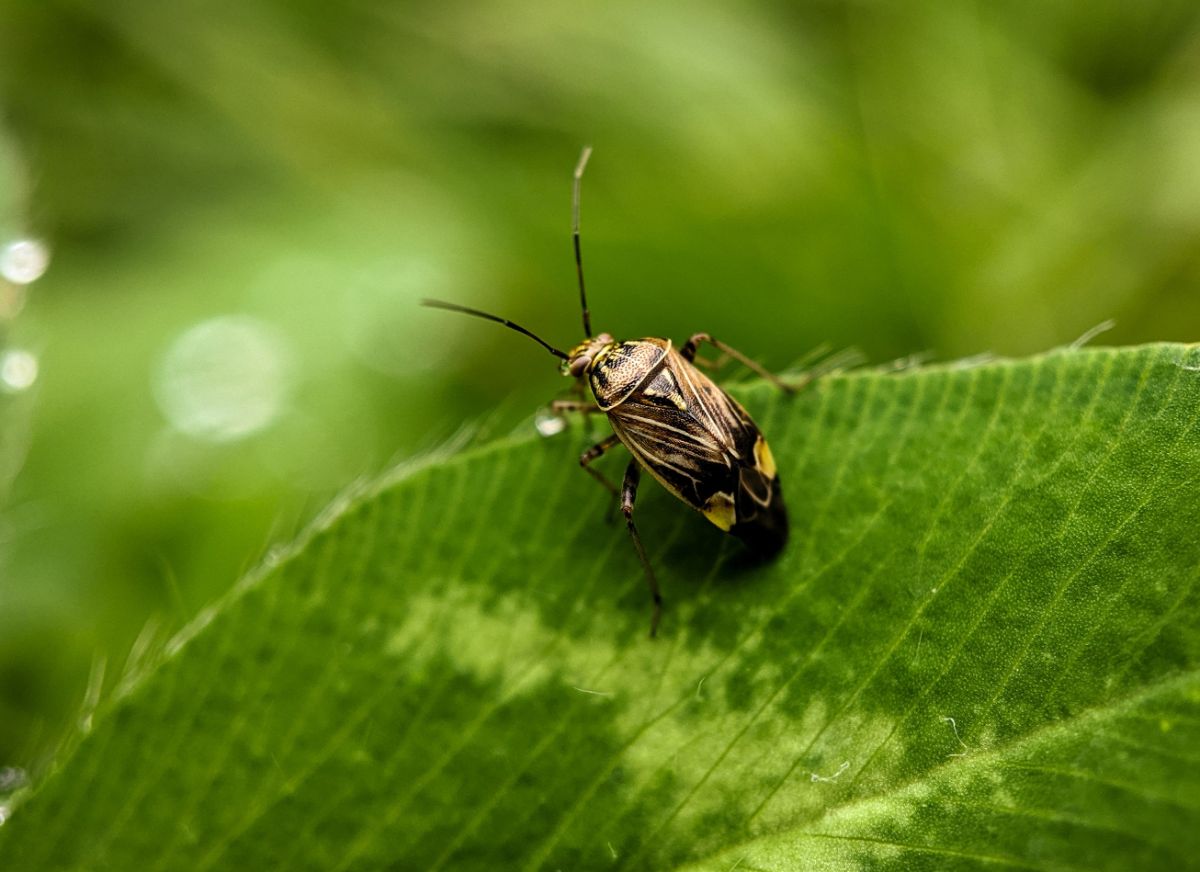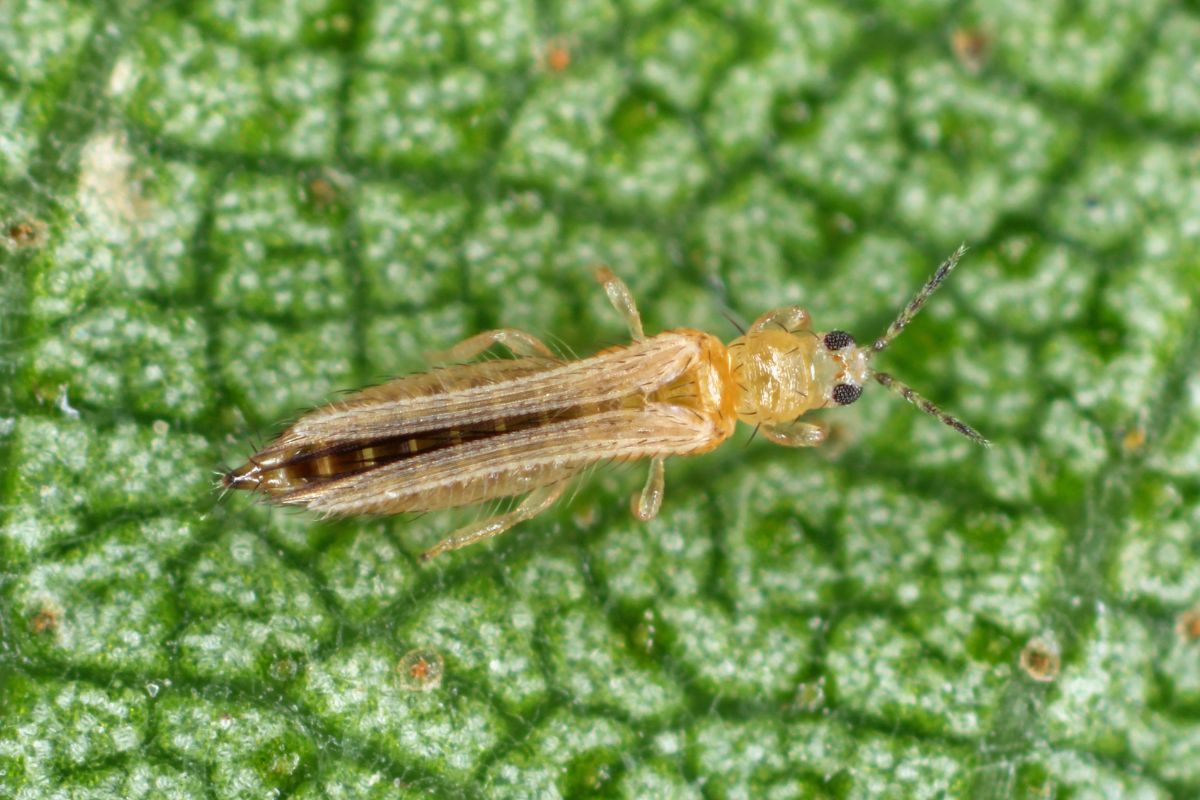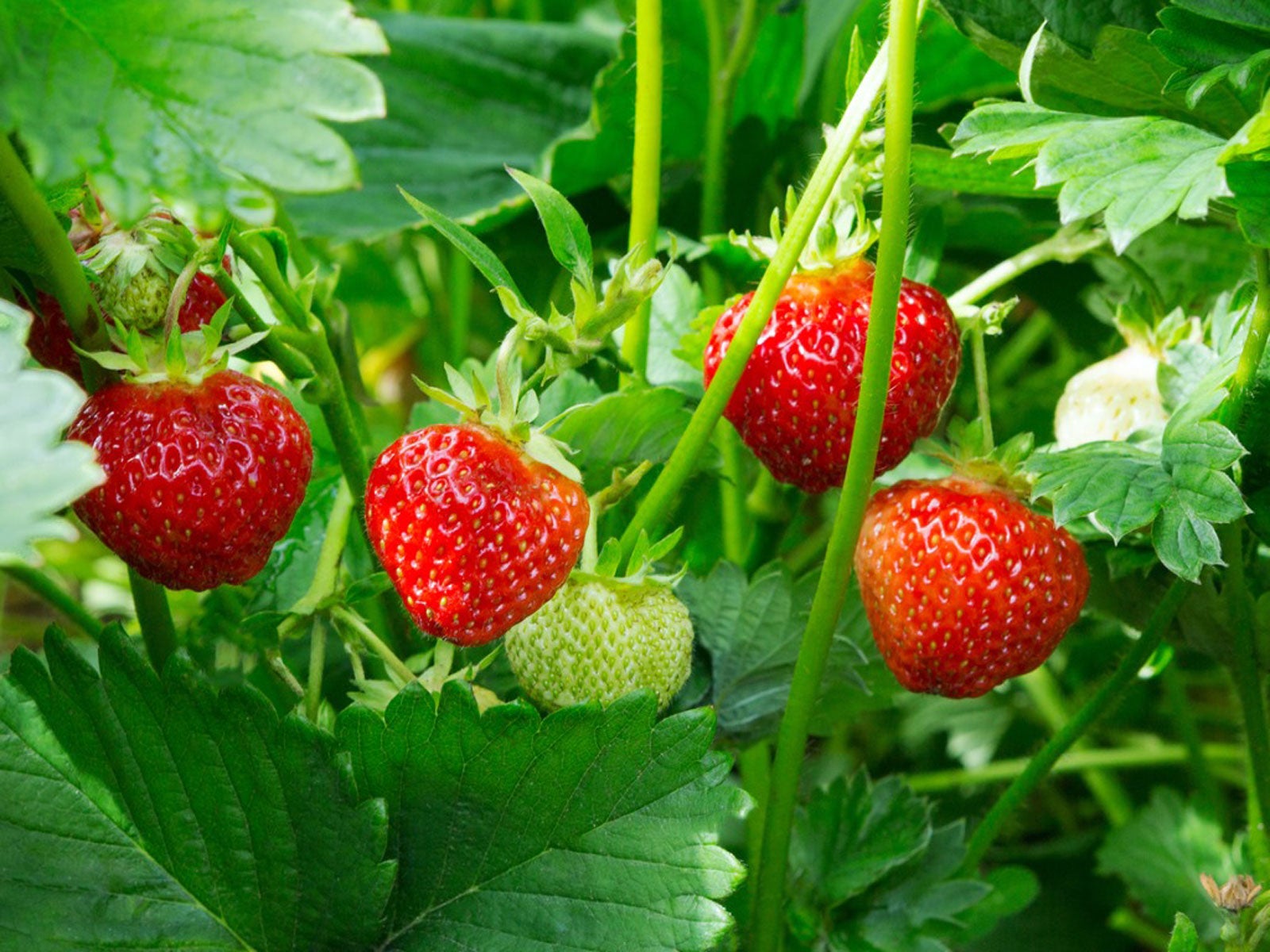Strawberries are delicious. They are packed with nutrition. And it is not just humans that love to eat them.
Whether your strawberry fields are large or small, birds, insects, and other pests will compete for your crop. This article will give you some easy ways to keep your strawberries for yourself and let your pets find other fruits and vegetables to eat. I wrote another article about good bugs and bad bugs and how to get them to your strawberry garden for good health. Jump to:
Growing juicy, sweet strawberries is a rewarding experience. But nothing is more frustrating than having your ripening berries snatched away by birds, rabbits, or other critters right before you get to enjoy them. Protecting your strawberry crop from hungry animals requires some clever strategies.
In this comprehensive guide, we’ll explore the most effective ways to safeguard your strawberries from thieving birds, insects, rodents, and other common garden pests With the right techniques, you can humanely prevent animals from spoiling your strawberry harvest
Keep Birds Away from Strawberries
Birds like robins, sparrows, starlings, and crows love feasting on ripe, red strawberries. They may eat the entire berry or just peck holes and leave the rest to rot. Either way, bird damage can quickly decimate a strawberry planting.
Here are some smart tactics to deter birds:
-
Use bird netting – Cover plants with bird netting secured firmly to the ground Be sure it doesn’t crush or smother plants. Leave enough slack for growth and picking.
-
Build a protective frame – Construct a PVC pipe or wood frame and drape lightweight row cover fabric over top. Lift to access berries.
-
Scare devices – Deter birds with decoys like owl statues, flashing pie pans, or old CDs hung near plants. Frequently move decoys so birds don’t get used to them
-
Noisemakers – Use timed noisemakers or recorded distress calls to startle and scare off feathered thieves. Vary the sounds and timing.
-
Plant yellow varieties – Birds instinctively avoid yellow berries since they indicate unripe fruit. Grow pale yellow varieties like Alpine Gold or Ivory.
-
Camouflage with painted rocks – Disguise inedible red-painted rocks as berries throughout your patch to trick birds. They’ll learn fast that the “berries” are fake.
Thwart Rabbits and Rodents
Rabbits, mice, rats, squirrels, and voles also enjoy snacking on strawberries. Protect plants with these tactics:
-
Install raised beds with hardware cloth or chicken wire buried at least 10 inches underground to block burrowing pests.
-
Surround plants with an 18-inch tall fence of galvanized metal flashing or hardware cloth. Bury the bottom edge to prevent digging underneath.
-
Set up motion-activated sprinklers that will startle nibbling animals away from your strawberry patch.
-
Interplant onions, garlic, or marigolds around strawberry plants. Rabbits and rodents dislike their strong scents.
-
Apply natural repellents around plants like hot pepper wax, predator urine, or essential oils. Reapply after heavy rain.
-
Trap and humanely remove pests like mice, rats, and squirrels when spotted in your garden. Eliminate hiding spots like tall grass and debris piles where they nest.
Protect Against Insects
Certain insects like sap beetles, fruit flies, slugs, and spider mites can ruin developing strawberry fruit. Here’s how to control them:
-
Handpick slugs, snails, and beetles and drop them into soapy water. Do night patrols with a flashlight to catch slugs in the act.
-
Set out dishes of beer to trap slugs and snails. They’re attracted to the yeasty smell but will drown in the liquid.
-
Hang sticky yellow traps near plants to capture adult fruit flies and sap beetles.
-
Remove old berries, dropped fruit, and rotting vegetation to eliminate insect breeding grounds.
-
Spray neem oil or insecticidal soap to suffocate soft-bodied pests like mites, aphids, and whiteflies.
-
Apply diatomaceous earth around plants as a natural abrasive insect deterrent. Avoid getting it on flowers.
-
Introduce beneficial insects like ladybugs and lacewings to prey on problem pests.
Stop Human Berry Thieves
In addition to wildlife, two-legged thieves may target your ripe, tempting berries. Deter human pickers with these simple tricks:
-
Post warning signs like “smile, you’re on camera!” even if you don’t actually have security cameras.
-
Arrange a conspicuous motion-sensitive sprinkler that will activate if someone steps into your strawberry patch.
-
Add a baby monitor or chime bells to alert you to trespassers entering your garden.
-
Place thorny branches or prickly bougainvillea cuttings around the perimeter to block access points.
-
Plant a “trap crop” of especially tasty berries away from your main patch to divert pickers.
-
Fence in your garden with deer netting or chicken wire to keep out casual berry grazers. Lock access gates.
-
Get to know neighbors who pass by your garden and kindly ask them to keep an eye out for berry thieves.
Create Physical Barriers
physical barriers around your strawberry plants prevents easy access for most wildlife pests. Protect plants with these enclosures:
-
Build wire mesh cages or boxes with lids to place over plants. Use cloches for smaller gardens.
-
Cover beds with garden fabric row covers or greenhouse plastic tunnels supported by hoops.
-
Make custom wooden or PVC frameworks to drape bird netting over plants. Secure the edges.
-
Surround garden beds with hardware cloth sunk into the ground to exclude burrowing animals.
-
Put up fencing or walls made of wood, wire, stone, or yard art to enclose your strawberry patch.
-
Install raised beds with vertical sides at least 10 inches high to deter rabbits and groundhogs.
The more impenetrable the barrier, the better protection your plants will have. Just be sure to leave room for airflow and growth. Check often for holes or weaknesses in structures where animals can enter.
Use Deterrent Sprays
Applying pungent natural repellent sprays around your strawberry plants can curb pest damage:
-
Mix hot pepper wax, chili powder, or cayenne pepper with water to make a spicy spray. Avoid getting it on plant parts.
-
Create garlic oil or onion juice repellents. Blend several cloves or onions with water, strain, and spray the filtered liquid.
-
Repel mammal pests by spraying predator urine available at garden centers around your plants’ perimeter.
-
Mix essential oils like peppermint, eucalyptus, tea tree, or lemongrass into water and spray on plants. Oil sprays may burn leaves in hot sun, so test first.
-
Apply insecticidal soap, neem oil, or pyrethrin flower spray to deter soft-bodied insects and beetles from feeding on fruit.
Reapply repellent sprays after heavy rain or every 1-2 weeks as needed to refresh waning smells. Never spray blooms to avoid harming pollinators.
Take an Integrated Pest Management Approach
Rather than relying on any single technique, use several strategies together to protect plants from all angles. Try combining physical barriers with scent deterrents and trapping methods to keep pests guessing!
Persistent monitoring, exclusion, and prevention is key. Inspect plants daily for signs of damage and address problems immediately. With some clever planning and diligent care, you can stay one step ahead of critters trying to sneak a berry snack!
What Can You Do About Fruit Flies?
If you don’t do anything, fruit flies will buzz around your strawberries for 30 to 40 days. That’s pretty long for flies. So do something about them:
- You can get rid of small groups of fruit flies with simple, non-organic methods that don’t cost much. About a quarter of a cup of vinegar and a few drops of dish soap can be used to clean dishes. Fruit flies will be drawn to the vinegar, but the soap will make it impossible for them to leave. You can also put rotting fruit in a jar, catch the fruit flies that come to eat it, and throw the jar, fruit, and flies away in the trash wrapped in plastic wrap. If you want to do things the natural way, you can make a fruit fly trap with any essential oil that has eugenol in it. Fruit flies are drawn to this chemical, which can make them come into soapy water or candles. It is found in large amounts in the essential oils of artemisia, cinnamon, galangal root, and hyssop.
- Commercial strawberry growers can also get rid of fruit flies without using poison. There are fruit fly “zappers” Lumnia brand. Because these fruit fly killers aren’t too flashy, you can use them in public places without drawing attention to your fruit fly problem. They require no chemicals and leave a minimal environmental footprint. In the end, they keep people from seeing dead fruit flies that have been “zapped.” ”.
- There are big risks for people, fish, birds, pets, and even chemicals used to get rid of fruit flies. Before you use chemical control, talk to a professional, like your county extension agent. An extension agent’s advice is free.

One of the most maddening pests is the tarnished plant bug (TPB). TPBs are the bane of farmers who grow small fruits and vegetables, including strawberry growers. The bugs are tremendously resilient. In an attempt to kill them off, farmers will often apply insecticides three to five times per year. For businesses, all of these insecticides may be necessary, but home gardeners may not need to use them.
The most infuriating aspect of a TPB infestation is the damage done to strawberries. Tarnished plant bug nymphs will inject a growing strawberry seed with a toxin. At the point of injection, the strawberry fruit will stop developing. This will result in a “nubbin. Another common type of deformed strawberry is a nubbin, which has a brown tip full of seeds and flesh that has stopped growing.
It isn’t easy. As mentioned above, great quantities of insecticide are required to get rid of these monsters. The best plan of action is to keep them out of your garden in the first place. Sprinkling diatomaceous earth may help keep them at bay. Also, since TPBs thrive in alfalfa, avoid mowing alfalfa while your strawberry plants are blooming.
In the future, there may be a fungal method of TPB control. The University of Vermont Entomology Laboratory is currently performing research on controlling insects with fungi. Tarnished plant bugs will be killed by a fungus that they find, making the world a better place for strawberry gardeners.
Thrips – Devastating Strawberry Pests

Thrips and strawberry plants simply don’t go well together. Thrips are one of the devastating strawberry pests that afflict strawberry plantings and enrage gardeners. If you are having difficulties with “something” damaging your strawberries, it just might be this common pest.
The thrips are small. They can range from 0. They can be anywhere from 5 millimeters to 14 millimeters long, but most are just over 1 millimeter (1/25 of an inch) long. See the picture below for a scanning electron micrograph of a thrip.
When strawberries have white spots or golden brown spots on the outside, it’s usually because thrips have eaten them. Strawberries contorted into odd, folded shapes (cat facing) often indicate thrips have been feeding as well. When thrips feed on the strawberry flowers, poor quality fruit is usually the result.
Thrips can do damage during most of the season. However, their populations tend to increase rapidly during the mid-to-late summer.
Thrips will do damage to any type of strawberry plant. This is because thrip populations rise in the middle to late summer, when strawberries that bear fruit all year tend to produce a bigger crop, they are more affected than June-bearers.
The bottom line is that thrips are bad news. If you see bugs like the one above, they probably want to eat your strawberry plants.
How to Easily Protect Your Blueberry & Strawberry Fruit from Birds & Squirrels | Garden Tips
FAQ
How to keep strawberry plants from being eaten?
What animal would eat my strawberry plants?
How do you keep animals away from strawberries?
Fencing can be an effective way to keep animals away from strawberries. Choose a fence that is tall enough to deter animals from jumping over it, and make sure the fence is securely attached to the ground. A fence can also be buried partially underground to prevent animals from digging underneath it.
How do I protect my strawberry garden from rodents?
To protect your strawberry garden from rodents, you can try the following methods: 1.**Physical barriers**: Install a garden fence with holes no larger than 2 inches that extend at least 6 inches underground
How do you protect a strawberry patch from animals?
Here are a few tips for gardeners on how to use natural repellents to protect strawberries: Use odorous plants to repel animals. Planting certain odorous plants near your strawberry patch can help deter animals from coming too close. Consider planting garlic, lavender, rosemary, or even mint around the perimeter of your strawberry patch.
How do I protect my strawberry crop from hungry Critters?
Luckily, there are a few natural repellents that can help protect your strawberry crop from hungry critters. Here are a few tips for gardeners on how to use natural repellents to protect strawberries: Use odorous plants to repel animals. Planting certain odorous plants near your strawberry patch can help deter animals from coming too close.
- The Ultimate Guide to Growing Strawberries in Raised Beds - August 8, 2025
- No-Dig Garden Beds: The Easiest Way to Grow a Beautiful Garden - August 6, 2025
- How to Protect and Preserve Wood for Raised Garden Beds - August 6, 2025

